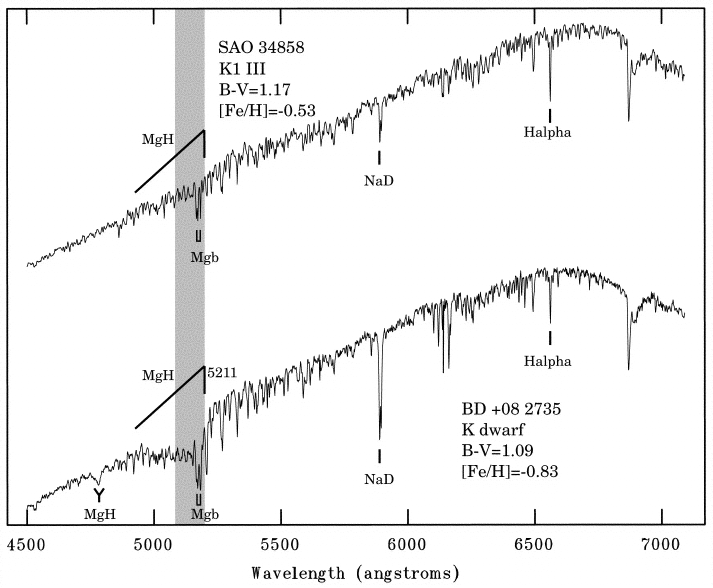
From Majewski et al., AJ, 120, 2550 (2000)
The SNAP calibration team is interested in these stars for two reasons:
You can read more about the useful properties of K giants in the document Primary Calibration Stars for SNAP.
Finding K stars is easy: simply measure magnitudes in two wide passbands and form a broadband color, such as (B-V) or (V-I). Stars with photospheres in the range of the K spectral class will fall within a particular range of color.
But how can one distinguish giants from dwarfs? It is the giants alone which can serve as good, constant sources of light. One way is to use a series of magnesium hydride absorption lines which depend on the surface gravity. The lines are strong in dwarfs and weak in giants:

From Majewski et al., AJ, 120, 2550 (2000)
If we measure the brightness of stars through a narrow filter which includes this series of lines, giants will look brighter than dwarfs. In order to separate this effect from an overall difference in apparent brightness, we also measure the stars through a second filter, one which is wide enough to include so much light from the surrounding spectrum that any difference due to these lines is washed out. (One can also use a second narrow-band filter which does not include the lines, but that increases the exposure time required).
Following the example of Majewski et al. (2000), we chose at the WIYN 0.9-m telescope
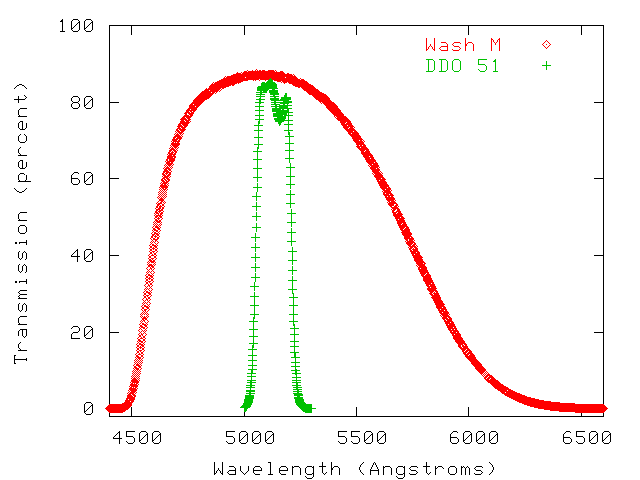
We also took images through the standard Johnson-Cousins V and I filters, which serve to measure the temperature of stars and isolate the K spectral class. We can define two colors:
If we make a color-color diagram of these two quantities, we should see a bifurcation in the region of K stars:
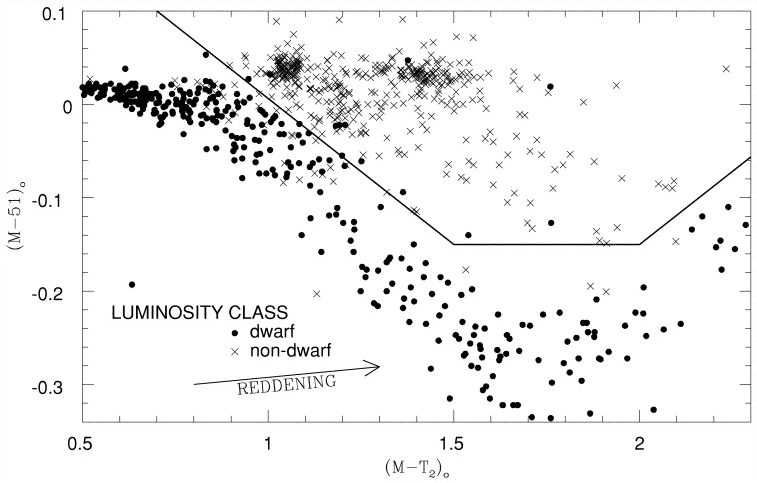
From Majewski et al., AJ, 120, 2550 (2000)
The giants have more flux in the DDO51 passband, which makes their "51" magnitude smaller, which makes a color defined as
M - DDO51
larger for the giants.
Our goal at the WIYN 0.9-m telescope was to obtain the data which would allow us to make this kind of color-color diagram and so identify a set of K-giant candidates for further study.
true_mag = raw_mag + a + b*(raw_color) - k*(airmass)
we measured mean and stdev values for the coefficients a, b, k and an overall RMS as follows:
N a b k RMS
-----------------------------------------------------------------------------
V 273 -3.133 0.027 -0.030 0.017 0.183 0.019 0.020
I 273 -3.637 0.023 -0.021 0.015 0.093 0.017 0.019
The MOSAIC camera at WIYN is a 4x2 array of 4096x2048 CCDs.
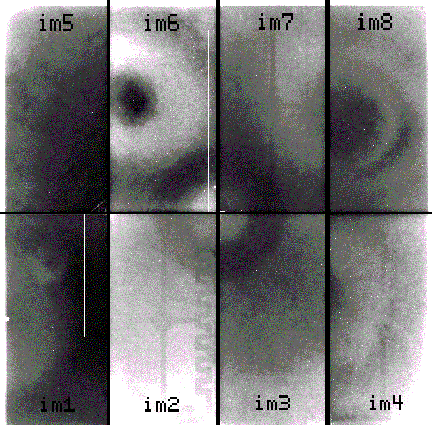
At the focal plane of the WIYN 0.9-m telescope, they cover an area roughly 1 degree on a side, with pixels 0.43 arcseconds in size. Each chip has a slightly different zeropoint and gain; we did not take those factors into account in our reductions.
We chose three target areas: one centered on a bright (V = 6) K star not far from the NEP, at RA = 16:38:00, Dec = +56:01:00 (this is an area suggested by Greg Aldering), and one each offset to the East and West by about half a field.
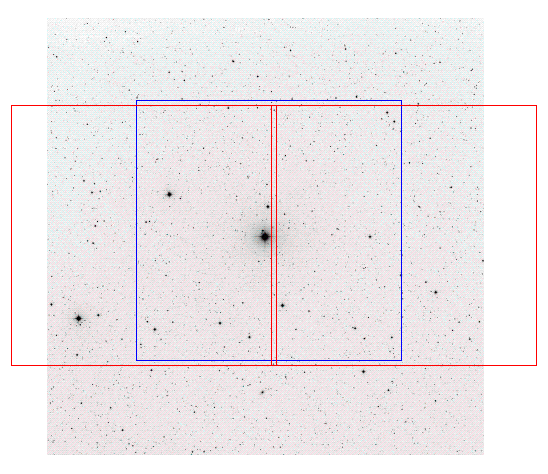
We took a series of images with different exposure times: 1 second, 10 seconds, and 100 seconds. We were able to cover all three fields with short exposures, but only the central and eastern fields with the longest (100-second) exposures.
Below are pictures of just one chip in the central field. North is up, East to the left.
V-band, 10 seconds.
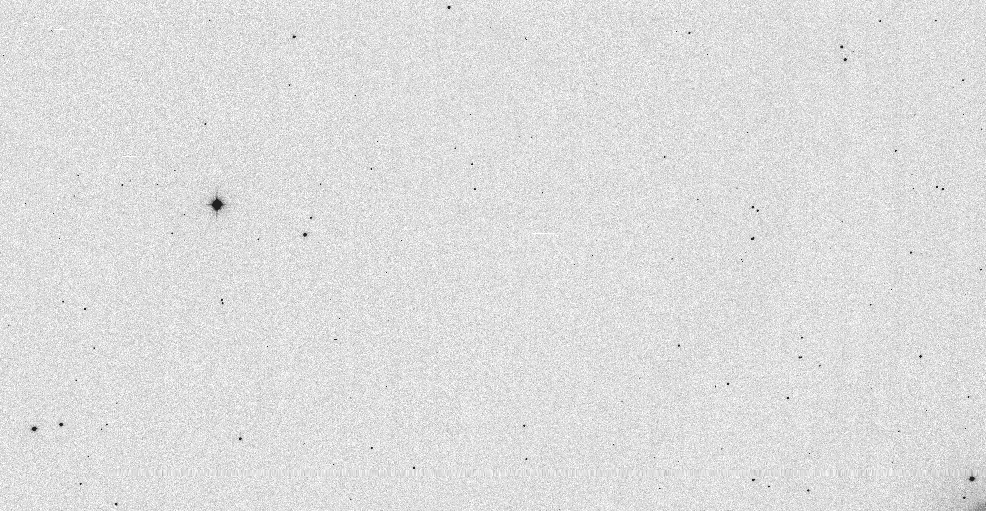
V-band, 100 seconds.
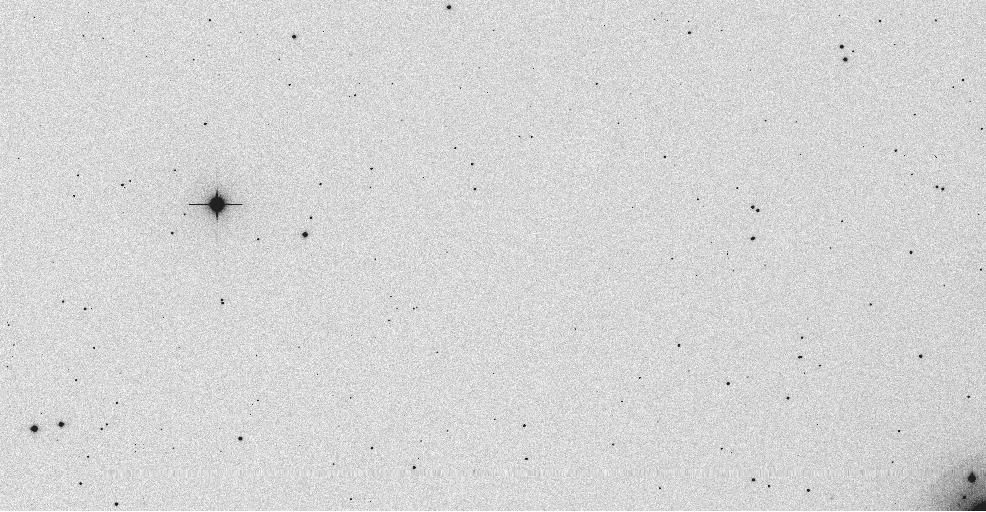
DDO51-band, 10 seconds.
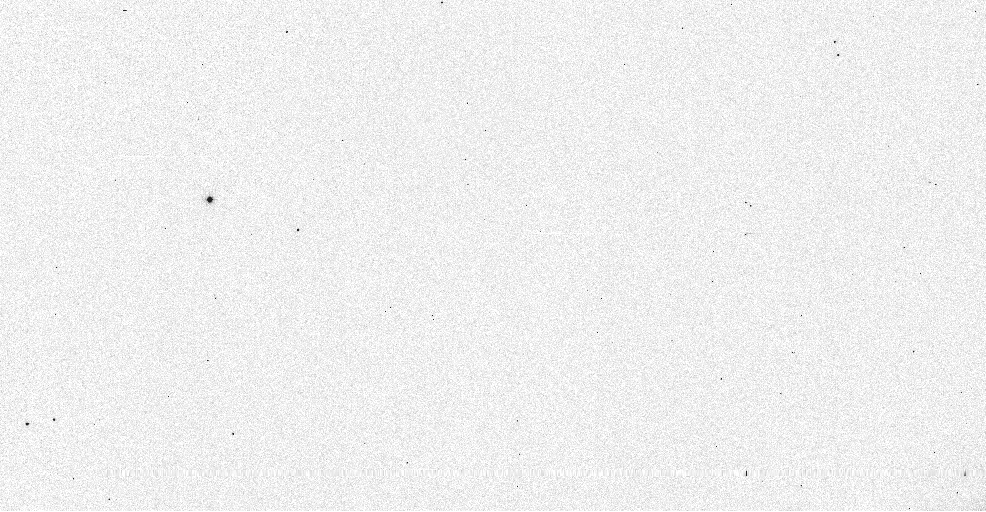
DDO51-band, 100 seconds.
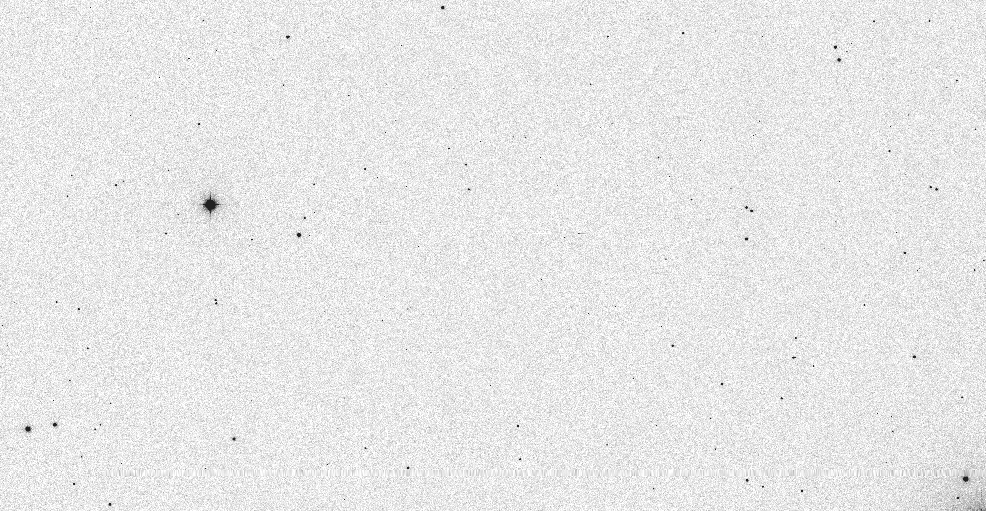
You may blink through the images to get a feeling for the difference in filter and exposure time.
So far, we have reduced completely only the images of the central field; the eastern field photometry remains to be deciphered. To make a long story short, here is our version of the color-color diagram which ought to separate the giants from the dwarfs:
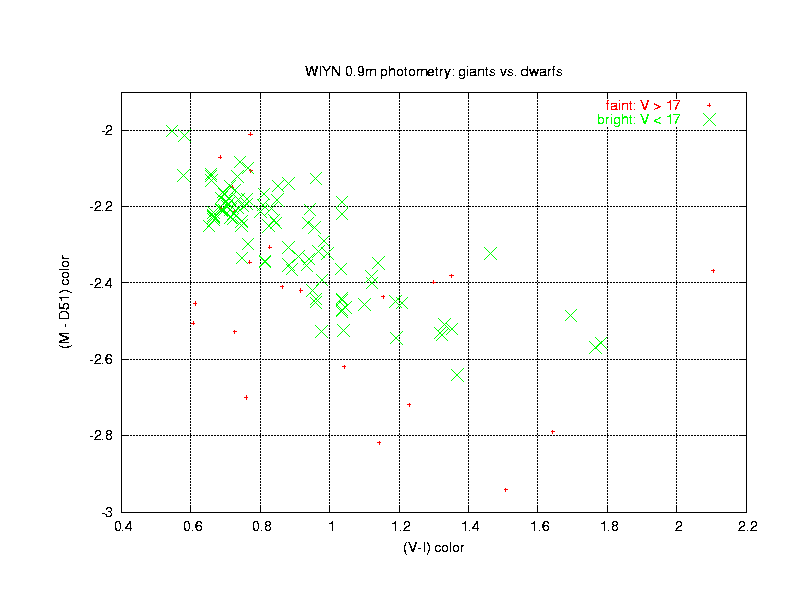
The (V-I) scale on the bottom is accurately calibrated, but the (M - D51) color on the horizontal axis includes an arbitrary vertical offset. Models of stellar atmospheres (and other observational efforts) tell us that K stars lie in the region
0.9 < (V-I) < 1.8
Do we see a gap of around 0.20 magnitudes in the
vertical direction?
My current answer: maybe. There are four stars with decent photometry which lie above the locus defined by the majority of stars. These are the best K-giant candidates we have so far, but more may appear when we look at the eastern field.
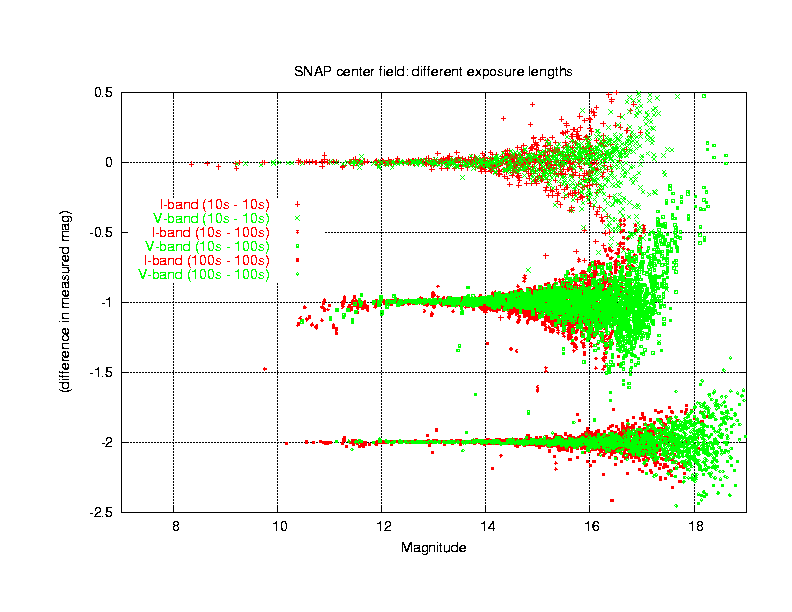
You can see in the diagram of above, which shows the difference between independent measurements of the same stars, that the uncertainty in our wide-band measurements was less than five percent at V=17. If we can bring the DDO51 measurements to that level, we can easily distinguish giants from dwarfs for many more stars.